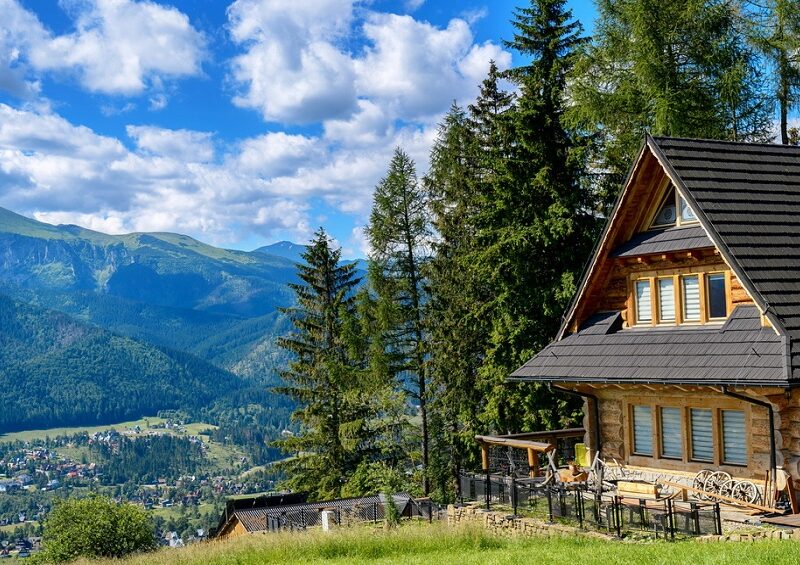You could argue that America’s westward expansion began with the Louisiana purchase in 1803. But it wasn’t until 40 years later that the Great Emigration put Western territories on the map. By the turn of the 20th century, architecture in Western states had taken on its own unique style. From there, it evolved into what it is today.
Park City, Utah’s Sparano + Mooney architectural firm points to three seismic events that shaped architecture in Western states. Those three events are:
- the introduction of modernism
- the arrival of postwar suburbia
- the post-modern revolution.
While there are plenty of older homes paying homage to these three events still standing in Western states, new homes built over the last two decades show elements of all three along with an emphasis on contemporary design.
1. The Introduction of Modernism
The Modernism movement got its start in Europe when architects began looking at entirely new building materials. They began using cast-iron, plate glass, and concrete. They also gave heavy attention to a building’s function. At the heart of Modernism was a desire to do away with the more ornate architectural styles of the past in favor of simplicity and frugality.
Modernism came to the States in the late 1890s and early 1900s. A hallmark of American Modernism was the simple exterior facade that, in some cases, belied the true nature of a structure. California became the home of American Modernism with its flat roofs, boxy shapes, and impressive use of glass.
2. The Postwar Suburbs
While California and Oregon were happy to embrace American Modernism through the 1960s, other Western states took full advantage of the postwar suburban boom. Following World War II, government-backed loans intended to increase home ownership did just that. Single-family homes in large neighborhoods became the status symbol of the day.
Architecturally speaking, suburban homes were simple by design. Unfortunately, they were also cookie-cutter homes. One home on a given street looked just like the one next door. There was so little variation that builders could put up new houses fairly quickly and at a much lower cost.
3. The Postmodern Movement
By the 1960s, Modernism’s obsession with function and the lack of variety in postwar suburbia led to the postmodern revolution. A number of architects dissatisfied with the results of both styles wanted something different. Though not necessarily against function, the postmodern movement wanted to bring back the beautiful facade punctuated by traditional elements that gave buildings character and style.
Little did those early postmodern architects know that they were ushering in the concept of contemporary architecture. From their movement came a new way of thinking in which buildings were designed according to what was popular at the moment, all tradition be damned.
A Conglomeration of All Three
Modernism, postwar suburbia, and the postmodern movements have been so influential in Western states that contemporary architecture reflects all three. You might even say it is a conglomeration of the three movements with a bit of modern flair to keep things contemporary.
Current styles like Mountain Modern reflect the clean lines and wide-open spaces of Modernism. They reflect the beautiful designs of postmodern facades. As for the postwar suburbia influence, it is not so much that Mountain Modern embraces any particular element. Rather, it purposely seeks to counter suburban housing tracts by preferring custom builds on single plots of land.
Architecture in Western states is probably more American than architecture in the East. It puts less emphasis on tradition and more emphasis on what America is at any given moment in time. Perhaps that is the appeal.











